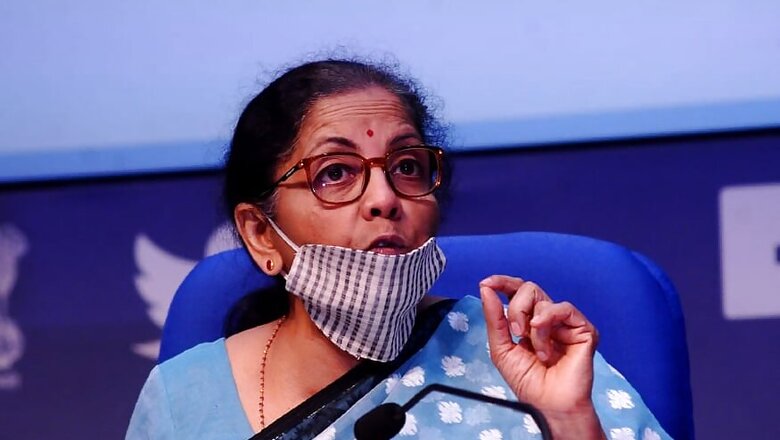
views
The Indian economy is in crisis, but not of a kind it has faced before. Unlike the 1991 balance of payments crisis, this is not because we are running short of foreign exchange. Unlike the 2008-09 crisis, this is not because of the possibility of a sudden stop to the financial system draining liquidity out of the economy.
Today’s crisis is a result essentially of the stringent lockdown imposed upon the country as a method of minimising the spread of the novel coronavirus: the drop in economic activity is not in spite of government action, but a deliberately chosen consequence.
Yet it is still an economic crisis, and the government must respond. We are finally beginning to see the beginning of an outline of what that response will be. Prime Minister Modi spoke with his usual eloquence of “self-reliance” in a broadcast to the nation; he used the phrase (in Hindi) an almost uncountable number of times, and yet most of us remain bewildered as to what he meant.
Did he mean a return to times past, when we sought to detach ourselves from the problems of the world? That seemed contradicted by his stressing India’s need to be part of global supply chains.
The PM’s speech added to a pervasive sense of uncertainty about the future. Uncertainty kills investment. It is worse than risk – risk is something you can price and manage.
The purpose of government at this stage of the crisis has to be to maintain India’s capability to rebound when the more stringent aspects of the lockdown have passed and internal supply chains have resumed. Think of this as the government preserving India’s national wealth – its companies, its people, the contracts and contacts they have with each other – while enduring a storm that is battering down on us from outside.
If the priority is preserving our capabilities, then we have to be given a sense of what the future holds. We cannot know how long the pandemic will continue to rage, where and how local outbreaks will happen, when a vaccine will be found. But we can know what the government plans as its support measures in the interim. This will not end the uncertainty associated with the pandemic; but it will significantly reduce it.
Unfortunately, the government is treating this as some sort of daily soap opera, with cliffhanger episodes. There is simply no need for drama at this point; we have enough already.
Instead of slowly releasing what the government plans, tell us all at one go what decisions have been made. The lockdown was announced on March 23, and consultations about an economic package began then. The government has taken long enough to make its decisions; there is no reason to further delay their dissemination.
What we know about the package, so far, however, is encouraging. The prime minister, in the course of his televised speech, declared that the stimulus package would be 10 percent of GDP, or Rs 20 trillion. This is an enormous amount of money for the government to promise as part of a stimulus, given that India’s tax revenue in 2018-19 was only 10.9 percent of GDP.
It is hard to think of any other country in the world that would hand out a stimulus package equivalent to an entire year’s tax revenue. South Africa, for example, which has also announced a 10 percent stimulus, had a tax to GDP ratio of 28.4 percent in 2017. (It also currently has a lower public debt to GDP ratio than India, an independent central bank that began inflation targeting 15 years before the RBI – and its debt is nevertheless rated junk. Indians complain about credit ratings agencies all the time without realising others have it even tougher.)
The finance minister’s press conference avoided giving any details as to how the stimulus would be paid for, or even how much actual money would be spent. This is, in fact, a clear indication that the Rs 20 trillion figure is almost certainly an exaggeration for political effect.
On the whole, that is wise. Many will believe the prime minister about the size of the money he has found for relief. But that is a political problem for the Opposition to resolve. What matters from the point of view of the economy is that the government’s diagnosis of its role appears to be accurate.
It is there to be the final backstop in terms of risk. Its position is unique in this crisis not because it can print money or raise taxes. What matter is also that it can take on the risk that others are facing. This is what it has partially sought to do by promising to, for example, guarantee some of the loans taken out by small and medium enterprises.
Naturally, individuals – including self-employed individuals – might not have access to the formal credit markets the same way that small enterprises do. The only way the government can help them manage the risk is by reducing their costs – through, say, rations of grain or hot food – or by increasing their income by direct transfers. Some aspect of this transfer must be tried out, and there is no way to avoid the fact that this will require the government to borrow.
But it need not borrow for all its interventions. Many do not in fact need spending; some of the needs of an economy facing this lockdown can in fact be met by liquidity and risk reduction. The government appears to have recognised this, at least on the basis of early evidence.
That shows signs of considerably maturity and responsibility – especially given the calls for printing money and the like that are issued daily in the media. Let’s hope the government stays the course, and the Rs 20 trillion number stays like the Rs 15 lakh promise – just a number.
The author is a senior fellow at the Observer Research Foundation and head of its Economy and Growth Programme. Views expressed are personal. The article first appeared in ORF.

















Comments
0 comment